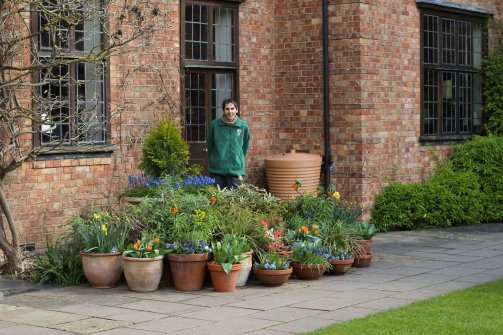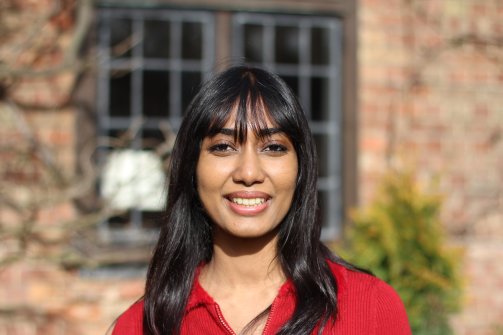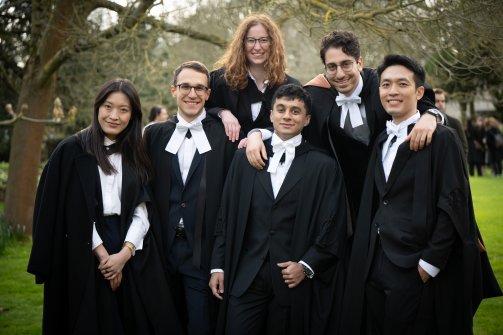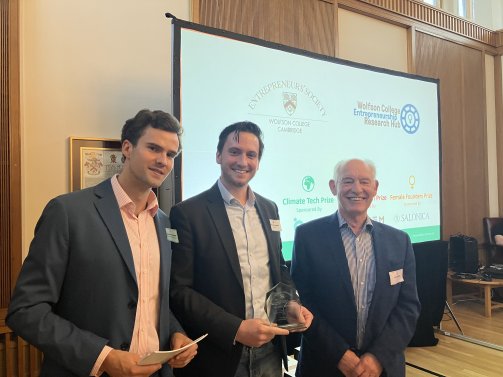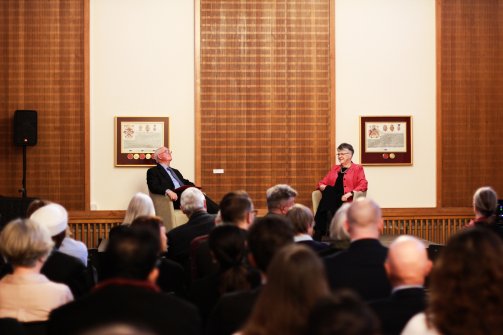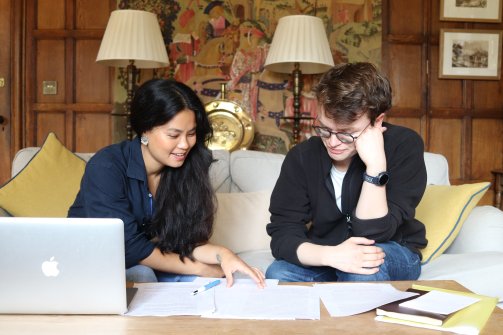The politics of time with Carolyn Smith
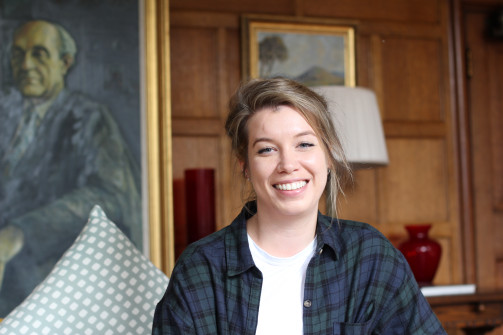
Dr Helene Hoffman is honest about the psychological demands of spending 14 months in Antarctica. “Maybe you have to be a little crazy to do it,” she says, “but don’t imagine we were camping there for a year: the station is very comfortable.”
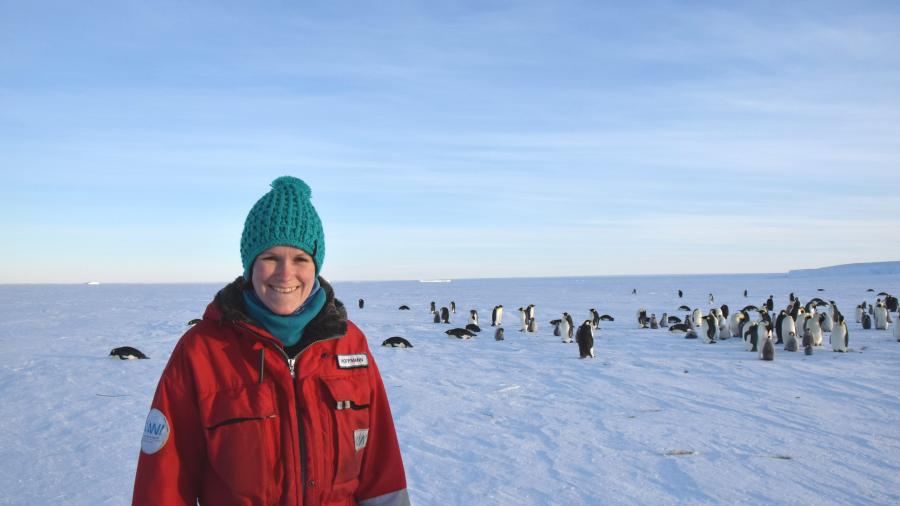
Helene – a Physicist specialising in Environmental Physics and ice core science – recently joined Wolfson as one of eight exciting new Junior Research Fellows. Following her doctoral studies, during which time she developed a method for radiocarbon dating of non-polar ice cores, Helene signed up for the 38th overwintering team at the German research base Neumayer III in Antarctica.
“The surrounding nature, despite being flat and white like some people say, is just stunning,” she says. “At the station, I was responsible for the air chemistry observatory where all kinds of climate parameters, like greenhouse gas concentrations, have been monitored for more than 30 years now.”
Despite the intense conditions in the Antarctic, researchers live and work all year round on the Neumayer Station III. Located on the Ekström Ice Shelf in the Atlantic sector of the Antarctic, the station commenced operation in 2009 and is the central basis of German Antarctic research.
“Every year, the wintering team consists of four scientists, three technicians, a doctor and a chef," says Helene. "We got to know each other in August and lived together for three months, and had all kinds of training, including fire-fighting, assisting the doctor, glacier training, before we went to Antarctica in December. Imagine it like a big family. Of course, sometimes people get on each other’s nerves, but you also have a lot of fun together.”
As part of this week’s Science Society talk, Helene will be giving an introduction to the benefits of ice core analyses, using examples from the European Alps and West Antarctica. An ice core is a long set of cylindrical pieces of ice, usually 1-2m long, which have been drilled one after the other from a glacier body, sometimes all the way down to the bedrock, sometimes only near the surface.
“Ice cores can archive the climate of the past,” says Helene, “not only in the chemical and physical composition of the ice itself, but especially in the enclosed air bubbles. The air in these bubbles provides an image of past atmospheres, for example greenhouse gas concentrations. If we want to run mathematical models to predict what might happen in the future, we need information from the past – before humans started messing with the climate – to feed these models.”
Helene will also be giving a summary of the next big international ice core project: the search for one-million-year-old ice in Antarctica, described by some scientists as the holy grail for climate science.
“In the more recent past of Earth’s climate history," she says, "up to around 800,000 - 1 million years before the present, the natural cycle between warm and cold periods was about 100,000 years. We know from ocean sediment records that before that time this cycle was more like 40,000 years. The reasons why this has changed remain unclear so far, but are very important for our understanding of the climate system. The ice core which will be retrieved in this project will hopefully span this transition period in age and provide invaluable information about the atmospheric conditions at that time.”
We might not get all the answers straight away, however. “The drilling is planned to be finished in 2026,” says Helene, “but this is only the starting point for the science. I would expect people to work on this ice core for the next 10-20 years.”
In the meantime, tune in to Helene’s Science Society talk, Back to the Future: Ice Cores and Climate Science, tonight, Friday 26th February, at 6pm, to hear more.


